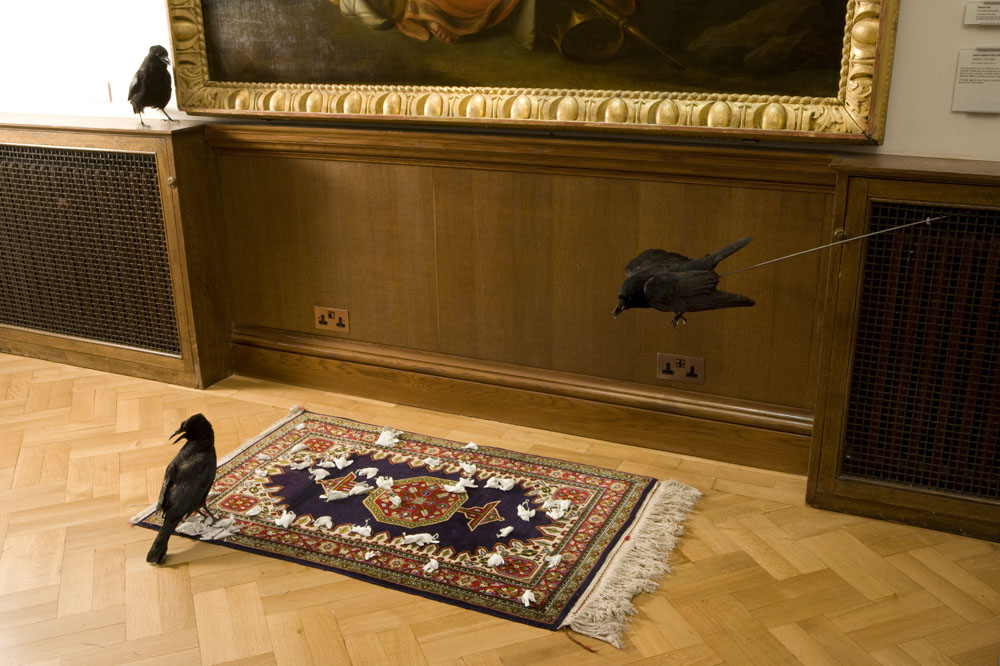Zory is a British- Iranian visual artist based in Greater London. Her practice developed through a concern to explore cultural/political agendas, employing performance in relation to installation and photography. She is exploring a wide range of media processes as well as sculpture and time based imagery. She works with abstract representations of the human body to communicate both literally and metaphorically, using domestic objects such as safety pins, spoons, cloth, rose blossoms, and hair.
While her artistic expression influenced by her background, it is also concerned with more universal issues around the contemporary human condition and breaches in human rights. She is primarily interested in the issues and perceptions around displacement, exploitation, and gender oppression.
– An excerpt from from Zory’s website
Zory exhibited in a group show with Louise Bourgeois, Kara Walker and Anthony Gormley at the Gallery of Modern Art, (Glasgow, April – September 2003) called ‘’Sanctuary: contemporary art & human rights‘’. Her solo exhibition called Waves has toured in Margaret Harvey Gallery and Norwich Art Centre, in 2007. She was selected for Method, a cultural Leadership Programme 2009, Escalator Visual Arts 2006/2007 and awarded the Grants for the Arts by Arts Council England.
The following was written by Alan Peacock ‘Material signs and sign materials, 2005, Reactions to an Exhibition by Zory at 198 Gallery.’
‘In video sequences the face may be never seen. Bound by bindings endlessly stripped away, there is always another layer of bandage or veil. These layers signify an inner-ness, a central something to be revealed, and as the layers swaddle the face and head these signify that this inner-ness is the self, the inalienable core, identity. Yet this is a self can never be found because it is always wrapped in yet another layer. The ambiguity signs both retreat and revelation, threat and the security of hiding. This is a self that can never be found by stripping away the layers because to strip away means to be outside, and the self can only ever be within. The sign of ‘stripping away’ is frustrated by endless repetition, and becomes a sign not of revealing but of dislocation, the self, after all, is not here to be found. For whatever reason they exist, these veiled layers deny the expression of self because self is other than what is seen or can ever be revealed.’

Zory says of her work:
‘I grew up in Iran and as a result my work is strongly influenced by Persian poetry, fabric and rug design. When still I was a teenager -a couple of years after 1979 revolution- I lost almost all the people dear to me. They were imprisoned, missing or executed due the government’s crack down on the opposition. The traces of those events are reflected in my work. I experiment with traditional art techniques combined with new technology while through abstract expression practice I investigate issues and perceptions around freedom related to displacement, exploitation, and gender oppression. Experiencing the dehumanisation of refugees and the ongoing struggle to be part of this society naturally is part of my work.’


